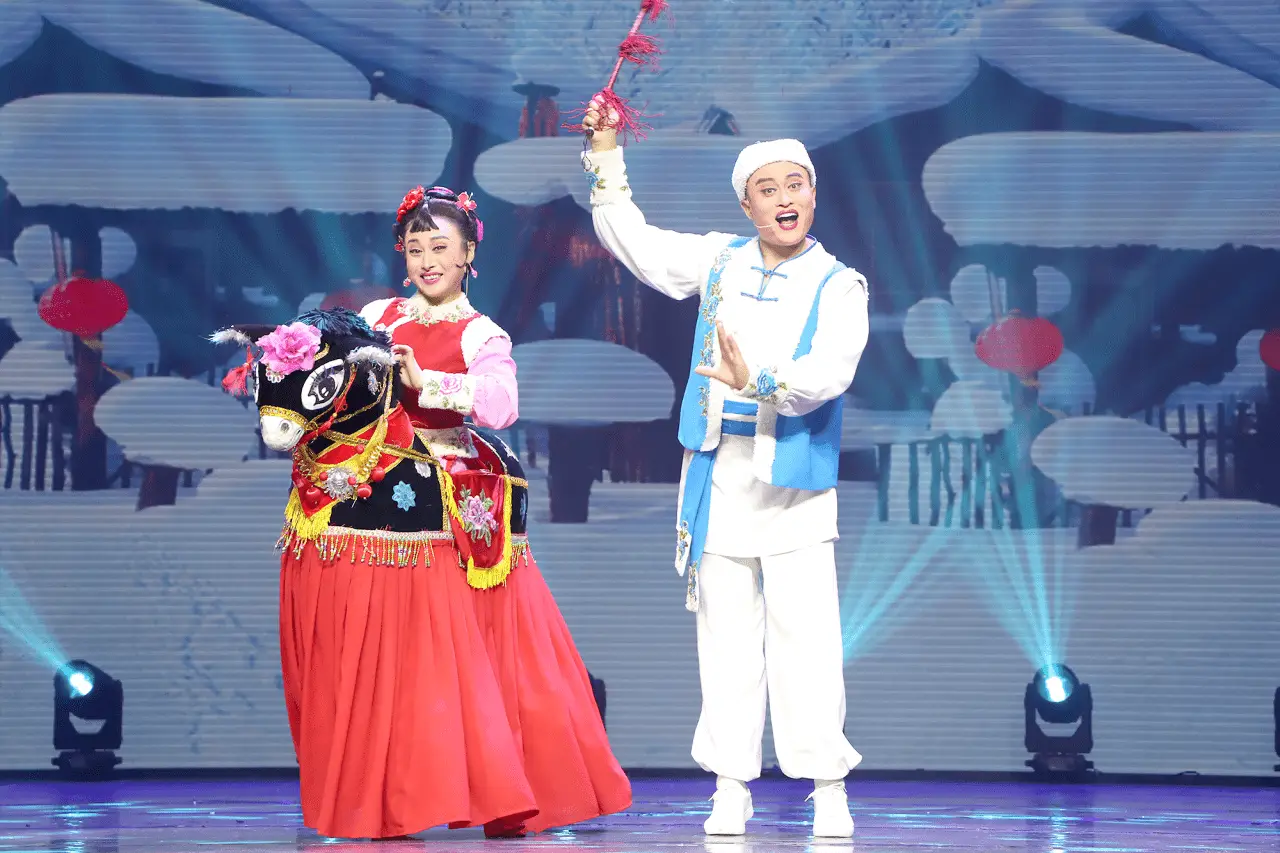Northeast Errenzhuan - Artistic Pearl of the Northeast China

Introduction to Northeast Errenzhuan
Northeast Errenzhuan is a traditional folk art form unique to China's Northeast region, known for its humorous performance style, rich local characteristics, and broad mass appeal. Originating in the mid-to-late Qing Dynasty, it combines various art elements such as Northeast folk singing and dancing, storytelling, and acrobatics. After hundreds of years of development, it has become one of the most representative cultural symbols of the Northeast region.
Errenzhuan is usually performed by two actors, one male and one female. The male actor is called "xiazhuang" (lower outfit), and the female actor is called "shangzhuang" (upper outfit). The performance forms are flexible and diverse, including speaking, singing, acting, and dancing. The content is mostly derived from folk life and historical legends, with vivid and humorous language that is deeply loved by the audience.
Historical Origins
The origin of Northeast Errenzhuan can be traced back to the mid-to-late Qing Dynasty. At that time, the immigrant culture and multi-ethnic integration in Northeast China provided fertile soil for the formation of Errenzhuan. Initially, Errenzhuan was a folk opera performed in rural courtyards, marketplaces, and other places, and later gradually developed into a mature form of opera art.
In the process of development, Errenzhuan absorbed the essence of various art forms such as Northeast Dagu (drum singing), Lianhualuo (lotus blossom song), and Yangko (rice-sprout song and dance), forming its unique artistic style. Especially during the Republic of China period, Errenzhuan developed rapidly, and many famous artists emerged, such as Li Zhengchun, the teacher of the renowned "King of Northeast" Zhao Benshan.
After the founding of the People's Republic of China, Errenzhuan received attention and support from the government. Through organization and reform, its content became healthier, its forms more abundant, and it became one of the most popular cultural entertainment forms in the Northeast region.
Performance Forms
Comic Dialogue (Shuokou)
Comic dialogue is an important part of Errenzhuan, including jokes, doggerel, and tongue twisters. Through humorous language, performers tell folk stories, satirize social ills, and express people's joys and sorrows.
Singing
Errenzhuan has rich and diverse singing styles, known as "nine tones and eighteen tunes." Commonly used singing styles include "Kaoshandiao" (mountain tune), "Wenkeke" (literary tune), and "Wukeke" (martial tune). The lyrics are mostly in seven-character and ten-character lines, with natural rhyme and easy to remember.
Dancing
Errenzhuan's dance movements are bold and unrestrained, full of Northeast characteristics. Through skills such as handkerchief flowers and fan dances, performers showcase the enthusiastic, cheerful character of Northeast people and their yearning for a better life.
Special Skills
Errenzhuan performers usually demonstrate some special skills, such as "playing handkerchiefs," "turning fans," and "somersaults." These skills showcase the performers' solid basic skills and excellent performance techniques.
Representative Works
Classic Plays
"Xiao Bai Nian" (Little New Year's Greeting): A classic traditional Errenzhuan play, telling the joyful scene of paying New Year's visits during the Spring Festival, expressing people's yearning and blessings for a better life.
"The West Chamber": Adapted from the Yuan Dynasty drama "The West Chamber," telling the love story of Zhang Sheng and Cui Yingying, with a touching and tortuous plot that is deeply loved by the audience.
"Pigsy Plowing the Field": A comedy adapted from "Journey to the West," showcasing the wisdom and optimistic spirit of the working people through the humorous image of Pigsy.
"Judge Bao Adjudicating Cases": A work based on the historical figure Bao Zheng, praising the spirit of upright officials who uphold justice for the people and eliminate violence, with profound social significance.
Artistic Features
Rich Local Characteristics
Northeast Errenzhuan is deeply rooted in the folk cultural soil of Northeast China, with language full of Northeast dialect characteristics, and a bold and unrestrained performance style, reflecting the enthusiastic, cheerful, and straightforward character traits of Northeast people.
Strong Inclusiveness
In the process of development, Errenzhuan has absorbed the essence of various art forms, including Northeast Dagu, Lianhualuo, and Yangko, forming its unique artistic style. At the same time, it continues to innovate, absorbing modern artistic elements and maintaining strong vitality.
Broad Mass Foundation
Errenzhuan originated from the people and serves the people. Its content is close to the lives of the people, with language that is easy to understand, deeply loved by the broad audience. Whether in urban theaters or rural fields, you can see Errenzhuan performances.
Inheritance and Development
With the development of the times, Northeast Errenzhuan faces new opportunities and challenges. On the one hand, traditional Errenzhuan needs continuous innovation in content and form to adapt to the aesthetic needs of modern audiences; on the other hand, how to protect and inherit this precious intangible cultural heritage is also an important issue.
In recent years, with the joint efforts of the government and all sectors of society, Northeast Errenzhuan has been well protected and inherited. Many places have established Errenzhuan art schools, cultivating a group of young Errenzhuan performers; at the same time, Errenzhuan has also expanded its influence through modern media platforms such as television and the Internet, winning the love of more audiences.
Especially with the promotion of famous artists such as Zhao Benshan, Errenzhuan has gone out of Northeast China, to the whole country, and even to the world, becoming a bright name card of Chinese culture.